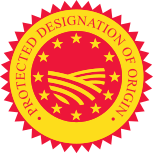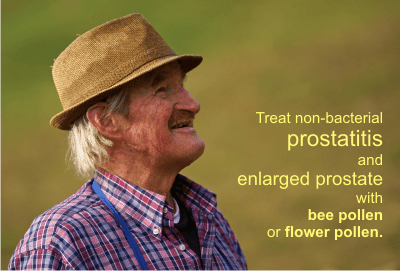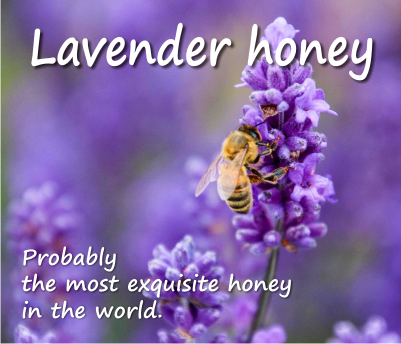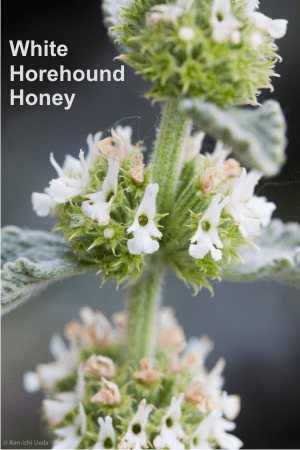Have you ever seen this label on a jar of honey? Ever wondered what is PDO honey or PGI honey? They do not refer to the source/type of honey but to Protected Designation of Origin (PDO) and Protected Geographical Identification (PGI).
Honey is not only something sweeter than sugar. While it is essentially composed of water and sugars (mainly fructose and glucose) there are other different valuable substances that make all the difference: vitamins, minerals, enzymes, flavors, free amino acids, and numerous volatile compounds.
Traditionally honey has always been used for healing wounds and burns and for the treatment of colds and sore throats. But now science has associated honey with many other medicinal effects, as it was shown to have antibacterial, hepatoprotective, hypoglycemic, antihypertensive, gastroprotective, antifungal, anti-inflammatory, and antioxidant effects.
All compounds found in honey can vary due to factors such as the botanical origin, geographic area, season, technology used for honey extraction, and storage conditions. Though present at small amounts, they are reported to represent a fingerprint and, therefore, are used to differentiate honeys by botanical and geographical origins, as well as to define their quality (Schievano and others 2013).
Honeys can be classified according to their floral source, we speak about monofloral (or unifloral) honey or multifloral (polyfloral) honey, or about blossom honey (produced from the nectar of flowers) and honeydew honey (produced not from nectar but from the drops of honeydew secreted by insects that live on tree bark). Read more about theirs differences and which are the types of honeys detailed in this website here: Types of honey.
Honey can also be classified according to its geographical origin, with particular types being from specific areas within the EU, bearing the labels of Protected Designation of Origin (PDO) and Protected Geographical Identification (PGI) labels, processed and prepared in given geographical areas using recognized expertise (Regulation (EEC) No. 2081/92).
This is what New Zealand also struggles to obtain with their manuka honey: Is New Zealand manuka honey BETTER than Australian manuka honey?
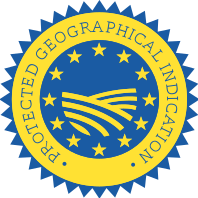 In Europe, according to Article (2) of Directive 2001/110/EC, the country or countries of origin where the honey is harvested have to be declared on the label and, in the case of more than 1 member state or third country, the origin of the honey has to be declared as a “blend of EC honeys,” “blend of non-EC honeys,” or “blend of EC and non-EC honeys.”
In Europe, according to Article (2) of Directive 2001/110/EC, the country or countries of origin where the honey is harvested have to be declared on the label and, in the case of more than 1 member state or third country, the origin of the honey has to be declared as a “blend of EC honeys,” “blend of non-EC honeys,” or “blend of EC and non-EC honeys.”
As happens with other products, PDO and PGI honeys generally present characteristics that are essentially or exclusively related to the specific region or particular local environment with inherent natural and human factors (Regulation (EEC) No. 2081/92). Currently, there are 23 PDO and 8 PGI honeys registered in the EU, with Portugal the country with the highest number (9 PDO honeys), followed by Spain (5 PDO and 1 PGI honeys) and France (2 PDO and 3 PGI honeys) (European Commission 2017).
PDO and PGI honeys are generally perceived as high-quality products, with refined and unique flavor and taste. Consequently, thew are the most susceptible to be adulterated through incorrect labeling and fraudulent admixing with lower-cost and low-quality honeys.
All PDO and PGI honey must comply to the following:
- must be of high quality
- may not contain any imported honey
- may not contain any additives
- must have a water content of less than 20%
PDO and PGI honeys registered by 2017
Protected designation of origin (PDO) and protected geographical indication (PGI) honeys registered in European Commission, Agriculture and Rural Development DOOR in 2017:
from Portugal:
• Mel de Barroso – a monofloral from heather, harvested from the regions: Boticas, Chaves, Montalegre, Vila Pouca de Aguiar, Murça, registered as PDO honey in 2005
• Mel dos Açores – multifloral and monofloral from incenso (Pittosporum ondulattum), produced in Azores islands and registered as PDO honey ever since 1996.
• Mel do Alentejo – which can be of different types: monofloral from lavender, monofloral from eucalyptus, monofloral from orange blossom and multifloral honeys. These are produced in different regions of Évora, Beja and Portalegre districts and are registered as PDO honeys since 1996.
• Mel do Parque de Montezinho – multiflower honey produced in Bragança and Vinhais andregistered as PDO since 1996
• Mel do Ribatejo Norte – multifloral honey from Alcanena, Ourém, Ferreira do Zêzere, Tomar, Vila Nova de Barquinha and Torres Novas, PDO honey since 1996
• Mel da Serra da Lousã – multifloral honey and monofloral honey from heather, produced in different regions of Coimbra and Leiria districts,PDO honey since 1996
• Mel da Serra de Monchique, Aljezur, Lagos, Portimão and Silves. A multifloral honey declared PDO in 1996.
• Mel das Terras Altas do Minho – monofloral from heather and multifloral honeys produced in different regions of Viana do Castelo, Braga, Vila Real, Porto and Aveiro districts.
• Mel da Terra Quente – monofloral from lavender and multifloral honey from Mirandela, Vila Flor, Moncorvo, Freixo de Espada à Cinta, Mogadouro, Alfândega da Fé, Macedo de Cavaleiros, Carrazeda de Anciães, Vila Nova de Foz Côa and Valpaços. registered as PDO in 1996
from Spain:
• Miel Villuercas-Ibores – monofloral from chestnut, monofloral from retama (Retama sphaerocarpa), multifloral and honeydew honeys, all produced in the Province of Cáceres and registered as PDO in 2017
• Miel de Liébana – honeydew and monofloral from heather, produced in Cabezón de Liébana, Camaleño, Cillorigo de Liébana, Pesaguero, Potes,Tresviso and Vega de Liébana. Registered as PDO in 2016.
• Miel de Tenerife – Monofloral honeys from “Retama del Teide” (Spartocytisus supranubius), from Tajinaste (Echiumspp.), from Avocado (Persea americana), from chestnut, from heather, from Shortpod mustard (Hirstfeldia incana), from Common ice plant (Mesembryanthemum crystallinum), from Fennel (Foeniculum vulgare), from “Poleo” (Bystropogon Origanifolius), from “Pitera” (Agave americana), from Malpica (Carlina xeranthemoides), from Arabian Pea (Aspalthium bituminosum), from honeydew. It also refers to multifloral honey. All from the Tenerife island and all registered as PDO in 2014.
• Miel de Granada – refers to monofloral honey made from chestnut, rosemary, thymus, avocado, orange blossom (Citrus sp.), French lavender (Lavandula stoechas) and multifloral honey, all produced in the Province of Granada andregistered as PDO in 2005
• Miel de La Alcarria – monofloral from rosemary, from spike lavender (Lavandula latifoliaMedicus) and multifloral, produced in the Province of Guadalajara and Province of Cuenca. registered as PDO in 1996
• Miel de Galicia aka Mel de Galicia – produced from eucalyptus (Eucaliptus sp.), chestnut (Castaneasp.), blackberry (Rubussp.), heather (Erica sp.) in the Autonomous Community of Galicia. Registered as PGI in 2007
from Italy:
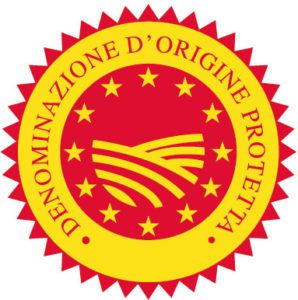 • Miele della Lunigiana – monofloral honey produced from acacia and chestnut in the Province of Massa Carrara. PDo honey since 2004
• Miele della Lunigiana – monofloral honey produced from acacia and chestnut in the Province of Massa Carrara. PDo honey since 2004
• Miele Varesino – monofloral from acacia (Robinia pseudoacacia L.) produced in the Province of Varese andregistered as PDO honey in 2014
• Miele delle Dolomiti Bellunesi – Multifloral from acacia, lime (Tilia spp.), chestnut, rhododendron (Rhododendron spp.), dandelion (Taraxacum spp.), all produced in the Province of Belluno and registered as PDO in 2011.
from France:
• Miel de Corse aka Mele di Corsica – honeydew honey from Maquis, monofloral honey from chestnut and multifloral honey from the Corsica Island. Registered as PDO in 2000
• Miel de sapin des Vosges – Honeydew honey from Departments of Meurthe-et-Moselle, Moselle, Haute-Saône and Belfort Territory. PDO since 2005
• Miel d’Alsace – monofloral honey from: silver fir, chestnut, lime, acacia, honeydew and multifloral honey. Harvested in the region of Alsace: Alsatian slopes of the Vosges and Jura mountain ranges for silver fir honey; hills south of the Vosges (Lower Rhine and Upper Rhine in the forests of Brumath and Haguenau) for chestnut honey; forests of Hardt (Upper Rhine) for lime honey. PGI honey since 2005
• Miel de Provence – monofloral and multifloral honeys from the Six departments of the Provence – Alpes – Côte-d’Azur region, with the exception of the some communes and cantons from the departments of Alpes-de Haute-Provence, Hautes-Alpes and Alpes-Maritimes. Drôme Provençale area and the eastern part of Gard. PGI honeys since 2005
• Miel des Cevénnes – monofloral from heather (Erica arborea, Erica cinerea, Calluna vulgaris), chestnut, raspberry, blackberry and multifloral honey. From the Departments of Ardèche, Aveyron, Gard and Lozère (mountain range which borders the Massif Central to the south-east). Declared PGI honeys since 2015
from Slovenia
• Kočevski gozdni med – honeydew, spruce, fir and lime harvested in Kočevje, Kostel, Osilnica, Loški Potok, Sodražica in Ribnica ter delno občine Črnomelj, Semič, Dolenjske Toplice, Žužemberk, Velike Lašče in Dobrepolje. Declared PDO honey since 2011
• Kraški med – honeydew from forest, multifloral from acacia (Robinia pseudoacacia), lime (Tilia sp.), Chestnut (Castanea sativan), St Lucie cherry (Prunus mahaleb), cherry (Prunus avium), winter savoury (Satureja montana), all produced in Karst area and registered as PDO in 2013.
• Slovenski med – monofloral honey from Acacia (Robinia pseudoacacia), lime (Tilia spp.), chestnut (Castanea sativan), fir (mainly honeydew), spruce (mainly honeydew), multifloral (pollen of fruit trees, Castanea sativa, Acer sp., Trifolium repens and plants of the Asteraceae family) and honeydew from forest. Registered as PGI in 2013.
from Luxembourg:
• Miel – Marque nationale du Grand-Duché de Luxembourg – multifloral honey produced in the Grand Duchy of Luxembourg. Registered as PDO in 2000
from Poland and Lithuania.
• Miód z Sejneńszczyny / Łoźd/ Seinų/Lazdijų krašto medus – multifloral honey produced in Poland: 4 municipalities in Sejny county and 5 municipalities in Suwałki. And in Lithuania: twelve civil parishes in the Lazdijai District municipality. PDO honey since 2012.
from Poland:
• Podkarpacki miód spadziowy – honeydew from European silver fir (Abies alba) produced in 17 State forest districts (Rymanów, Komańcza, Lesko, Baligród, Cisna, Wetlina, Stuposiany, Lutowiska, Brzegi Dolne, Strzyżów, Bircza, Dukla, Brzozów, Dynów, Kańczuga, Radymno, Krasiczyn) and Bieszczadzki Park Narodowy and Magurski Park Narodowy. PDO honeys since 2010.
• Miód wrzosowy z Borów Dolnośląskich – heather honey (Ericaceae) harvested in the boundaries of the area in which nutrient heather stands, PGI since 2008.
• Miód kurpiowski – multifloral honey from Kurpie, PGI since 2010.
• Miód drahimski – buckwheat (Fagopyrum), heather (Calluna vulgaris), colza (Brassica napus var. arvensis), lime (Tilia spp.) from the Municipalities of Czaplinek, Wierzchowo, Barwice, Borne Sulinowo and in the Borne Sulinowo Forest District, located in the Drawa Lake District. PGI since 2011.
from Greece:
• Menalou vanilia fir honey – “Vanilla” honey of Mount Mainalo, Arcadia , made from fir blossom nectar.
Other PGO and PGI honeys from different countries:
• Ghasel (from Malta)
• Honeys from Sunflower, buckwheat, acacia (from Ukraine)
• Eucalyptus honey (Australia)
• Leatherwood Honey (Tasmania) a noted monofloral honey from Tasmania that has been recognised by the international Slow Food movement in its Ark of Taste.
• Miel de Ulmo (ulmo honey) with nectar from Eucryphia cordifolia (Chile)
****************
**************
References:
A Comprehensive Review on the Main Honey Authentication Issues: Production and Origin, a study by Sónia Soares st al. published in June 2017
Logo found on products with protected designation of origin according to EU law (Italian language version) picture source unknown – Journal Officiel de la CEE n° 628/2008, Public Domain, https://commons.wikimedia.org/w/index.php?curid=5003652
Protected designation of origin logo – a logo owned by European Commission for Geographical indications and traditional specialties. source: https://en.wikipedia.org/w/index.php?curid=54494276
Protected geographical indication logo source European Commission website, https://en.wikipedia.org/w/index.php?curid=31330050

